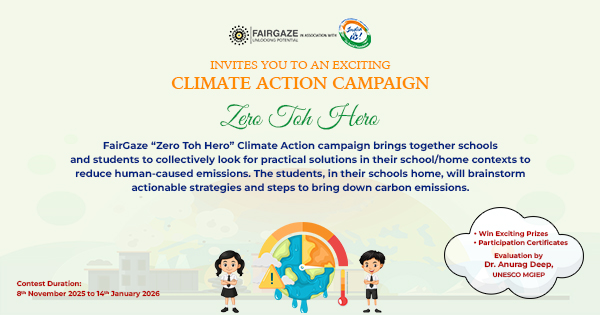
What Is Vulcanicity? What Are The Types, Causes & Associated Landforms?
Education News | Aug-01-2023
Vulcanicity, likewise alluded to as volcanism, is a geographical peculiarity related to the action of volcanoes and the development of magma inside the World's outside layer. It includes the arrival of liquid stone, debris, and gases onto the World's surface or into the climate.
There are various types of volcanic activities. One common type is effusive volcanism, characterized by the gentle flow of relatively low-viscosity magma, resulting in shield volcanoes and lava plateaus. Another type is explosive volcanism, where high-viscosity magma leads to violent eruptions and the formation of stratovolcanoes and calderas.
The primary cause of vulcanicity in the movement of tectonic plates. Diverging plates allow magma to rise and fill the gap, leading to constructive boundaries and mid-oceanic ridges. Conversely, converging plates force one plate beneath another through subduction, resulting in volcanic arcs and explosive eruptions. Additionally, hotspots, regions with concentrated heat in the mantle, can cause volcanic activity away from plate boundaries, forming volcanic chains like the Hawaiian Islands.
Associated landforms include volcanic mountains, such as Mount St. Helens and Mount Fuji, formed from lava and volcanic ash layers. Like Yellowstone National Park, calderas result from massive volcanic explosions that collapse the volcano's central part. Volcanic islands, like Iceland, emerge from the ocean due to lava accumulation from underwater volcanic activity.
In conclusion, vulcanicity is a natural process caused by the movement of magma within the Earth's crust, resulting in various types of volcanic activities and the formation of distinct landforms. These geological processes significantly impact the Earth's surface and have both positive and negative effects on the environment and human societies.
Also Read: Impact Of Volcanic Activity On Soil Fertility
FAQ
What is Vulcanicity
Vulcanicity refers to the processes through which magma moves from within the Earth to the surface, forming volcanic features like lava flows, ash, and volcanic landforms
Related News
-
Relationship Between Poverty and Health
-
Indigo Cultivation: Challenges and Opportunities
-
Economic Significance of Indigo Plantation
-
Impact of Synthetic Indigo on Traditional Indigo Farming
-
Leadership Skills Developed by Student-Coached Teams
-
Inclusive Strategies Benefit Diverse Learners
-
Mindfulness Practices Implemented to Reduce Stress
-
Mental Health Programs for Student-Athletes Gain Support
-
The Importance of Financial Literacy for College Students
-
The Impact of Climate Change on Extreme Weather
Most popular news
- The Law Of Equivalent Exchange
- Essay On Issues And Challenges Of Rural Development In India
- Srinivasa Ramanujan And His Inventions
- The Youth Is The Hope Of Our Future!
- Poverty In India: Facts, Causes, Effects And Solutions
- Top 20 Outdoor Games In India
- Festivals Of India: Unity In Diversity
- Role Of Women In Society
- The Impact Of Peer Pressure On Students' Academic Performance
- Books As Companion




